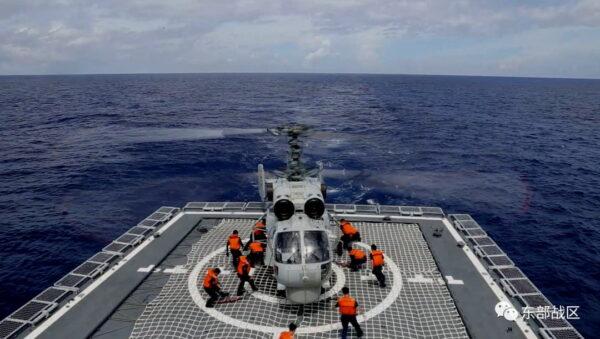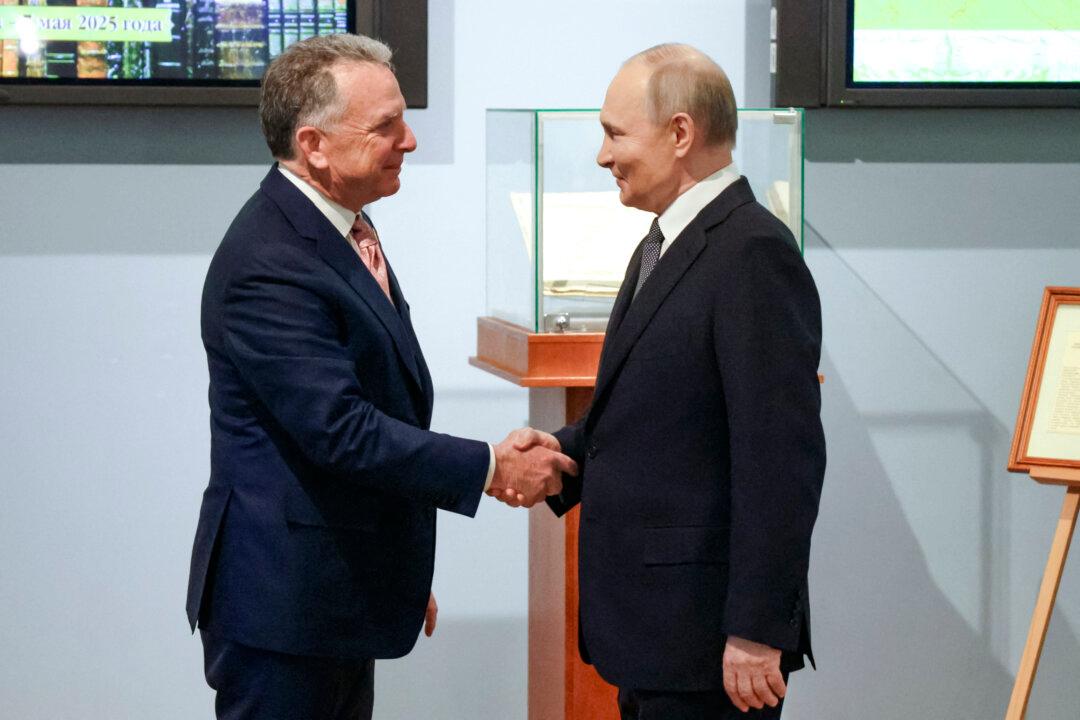Communist China is baiting a catastrophic conflict in the Indo-Pacific by engaging in threatening and erratic military maneuvers designed to intimidate the United States and its allies.
The regime’s military wing, the People’s Liberation Army (PLA), frequently risks the lives of its pilots and those of the United States and its allies by conducting aggressive close maneuvers, according to Assistant Secretary of Defense for Indo-Pacific Security Affairs Ely Ratner.
“If Beijing’s intent is to somehow intimidate the United States out of operating according to international law, that hasn’t worked [and] it’s not going to work. But it is very reckless behavior.”
Ratner’s comments referred to increasingly common incidents in which PLA aircraft have attempted, and sometimes succeeded, in forcing allied aircraft out of international airspace by releasing chaff, a countermeasure made of numerous shards of metal, into their engines mid-flight.
The Canadian aircraft involved had been on a U.N. mission to investigate reports that Chinese ships were violating international sanctions by illegally delivering oil to North Korean vessels at sea.
Ratner said that the provocations demonstrated China’s communist regime did not care about being taken seriously as a superpower.
“It is a pattern of behavior that has been growing in particular over the last year and a half or so,” Ratner said.
The CCP Rejects International Law
Ratner’s comments follow the release of the Pentagon’s annual China Military Power Report, which found that communist China was engaged in a whole of society effort to seize Taiwan and displace the United States as leader of the international order.Ratner described the report as “the most authoritative unclassified articulation of PRC capability and strategy,” using an acronym for communist China’s official name, the People’s Republic of China.

To that end, Ratner connected the PLA’s provocations to the regime’s larger ambition of becoming a global military power. He said that the maneuvers were intended to push the United States and its allies out of the Indo-Pacific but that such an effort was doomed to fail.
“We’re going to continue to fly, sail, and operate in a way that is consistent with international law, that is responsible, that is peaceful, regardless of this behavior,” Ratner said.
Ratner warned that the Chinese Communist Party (CCP) and its leader Xi Jinping “don’t accept” international law and refuse to accept the peaceful transit of vessels in international waters where it seeks hegemony.
As such, he said, the United States would continue to lead an international effort to present a model of responsible statecraft in the Indo-Pacific and work peacefully with partners throughout the region even as the CCP engages in military intimidation.
“We’re seeing a more global PLA,” Ratner said. “One that is pursuing installations around the world, very ambitious aspirations with the projection of power and sustaining power overseas.
A Conflict of Decades
Speaking at the same event, Deputy Assistant Secretary of Defense for China Michael Chase said that the Pentagon expects 2023 to be a decisive year in the competition between the CCP and United States, but the PLA threat will not end anytime soon.Indeed, according to Chase, the Pentagon anticipates the CCP’s aggression, and related risk of catastrophic conflict, to continue for at least three more decades.
“This is part of what makes the PRC the pacing challenge,” Chase said. “There are challenges that we could face in the very near term, over the next five years, and beyond.
“Xi Jinping has set goals for the PLA to accomplish in 2027, 2035, and all the way up to 2049, and we have to be prepared to deal with the challenges they present through that entire time period.”
To that end, Chase said that the CCP sought nothing less than to become a global military power, with a string of bases and other installations spreading its malign influence throughout multiple continents.
“It’s increasingly clear that the PRC has global ambitions for the PLA,” Chase said.
“We now see the pursuit of a global network of logistics and support facilities and bases to help them build that out and become a global military power.”





